Get a glimpse into how Spanish homes harmoniously blend vibrant interiors with the ancient Chinese art of Feng Shui.
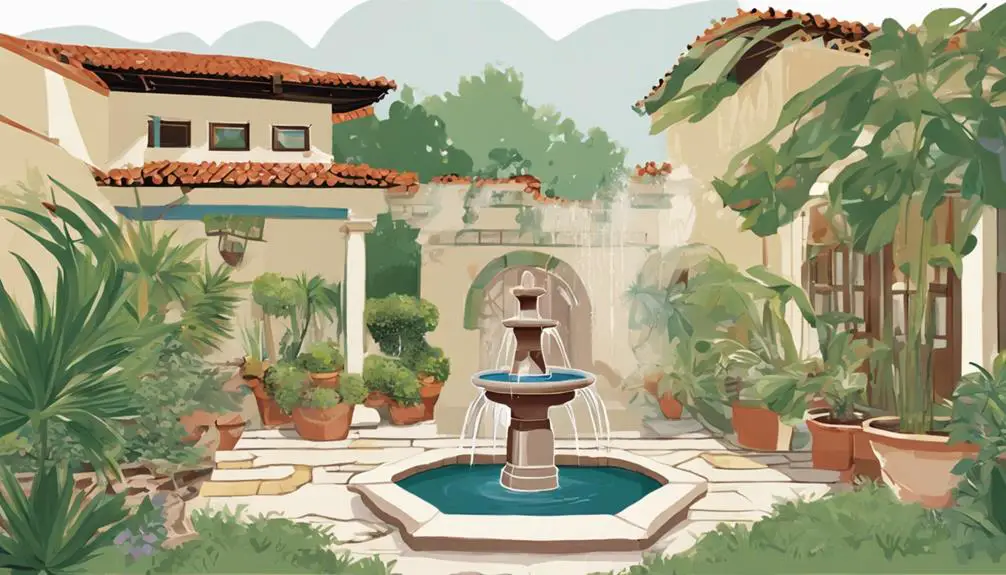
Feng Shui Spanish
Did you know that an estimated 72% of Spanish homes have at least one Feng Shui element incorporated into their design?
You're probably wondering how Feng Shui, an ancient Chinese art of harmonizing one's environment, merges with the vibrant and rustic charm of Spanish interiors.
It's not only homes; workplaces and public spaces are also embracing this east-meets-west design philosophy.
How does it work? What's its impact on the Spanish lifestyle?
Let's find out.
Key Takeaways
- Spanish homes and public spaces effectively incorporate Feng Shui principles, promoting harmony and positive energy flow.
- Spanish lifestyle elements such as vibrant colors and communal dining enhance the Feng Shui in living spaces.
- Spanish workplaces utilize Feng Shui for improved productivity, communication, and employee satisfaction.
- Spanish architecture's open layouts and natural light are perfectly aligned with Feng Shui principles, creating balanced and prosperous environments.
Understanding Feng Shui Basics
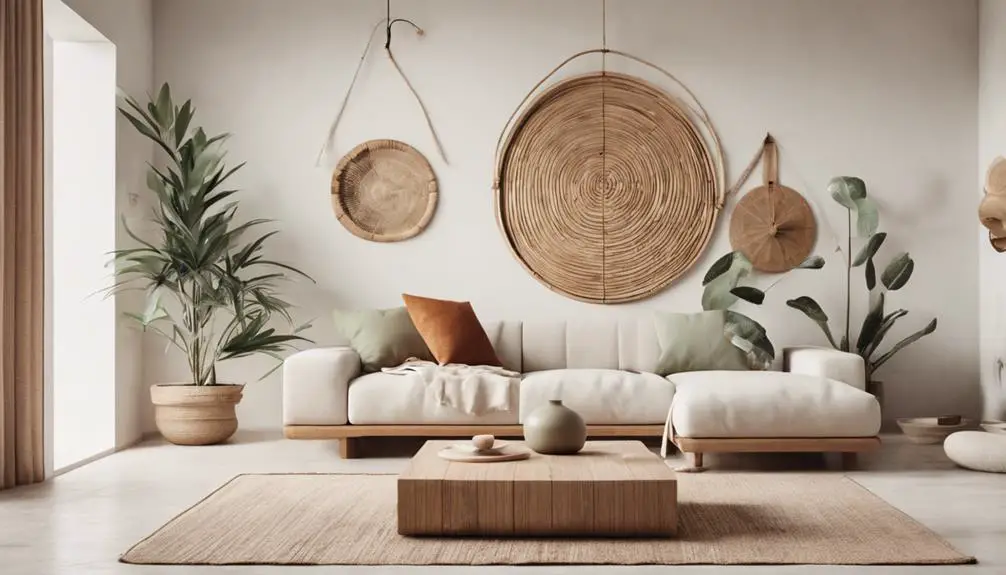
To truly grasp the art of Feng Shui, it's crucial that you first understand its basic principles and how they're rooted in ancient Chinese philosophy. The origins of Feng Shui, or literally, 'wind-water', trace back over 3,000 years, serving as a guide to harmonizing individuals with their surroundings. It's not just about rearranging furniture, it's a comprehensive system of laws considered to govern spatial arrangement and orientation in relation to the flow of energy (Qi).
Symbolic decorations play a vital role in Feng Shui. Each element – be it color, shape, or object – carries a unique energy signature that can either enhance or diminish the Qi in a given space. For instance, water features are believed to stimulate wealth and prosperity, while mirrors are used to reflect negative energy away.
Understanding this, you can see how Feng Shui is more than just an interior design trend. It's a way of life, a philosophy that seeks to create balance and harmony in one's environment. So, as you delve deeper into its principles, remember that it's all about managing and enhancing the energy flow within your space.
The Spanish Lifestyle Influence
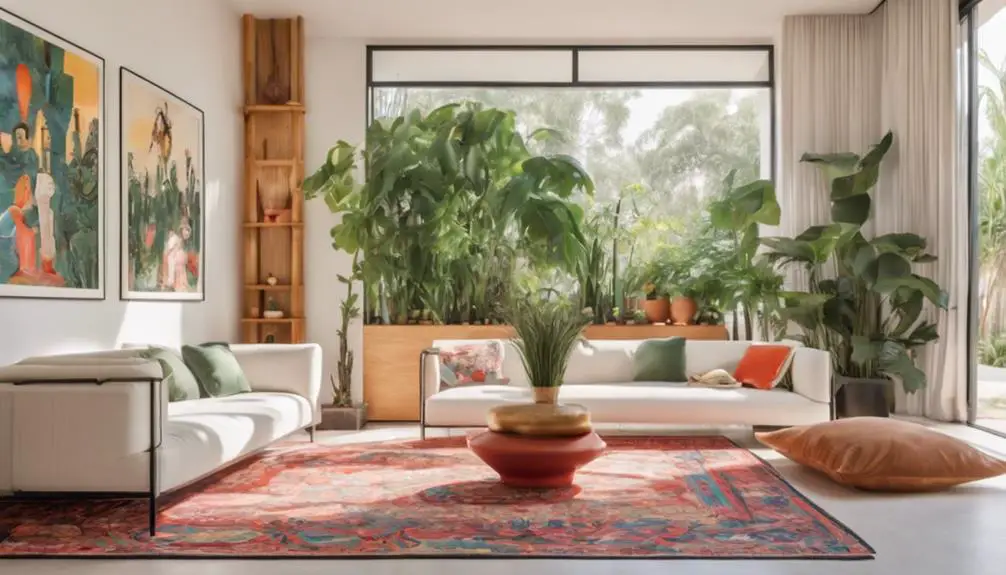
Influenced by the warm, vibrant culture of Spain, incorporating Spanish lifestyle elements into Feng Shui can lend your space an unmistakable air of dynamic harmony. The Spanish lifestyle, marked by cultural influences such as Spanish gastronomy, vibrant colors, and festive traditions, can infuse a unique energy into your Feng Shui practices.
Spanish gastronomy, for instance, is more than just food – it's a way of life. The joy of gathering around a table, sharing tapas or a hearty paella, reflects the Spanish love for life and can be mirrored in your Feng Shui design. Similarly, the Spanish passion for lively colors, music, and dance can be translated into vibrant decor and layout choices, enriching your space with a sense of vivacity and movement.
Here's an easy way to visualize this:
| Spanish Lifestyle Element | Feng Shui Implementation |
|---|---|
| Spanish Gastronomy | Use of dining areas for socializing, warm colors |
| Vibrant Colors | Use of reds, yellows, and oranges in decor |
| Music & Dance | Incorporation of dynamic elements, such as wind chimes |
Merging Feng Shui With Spanish Interiors
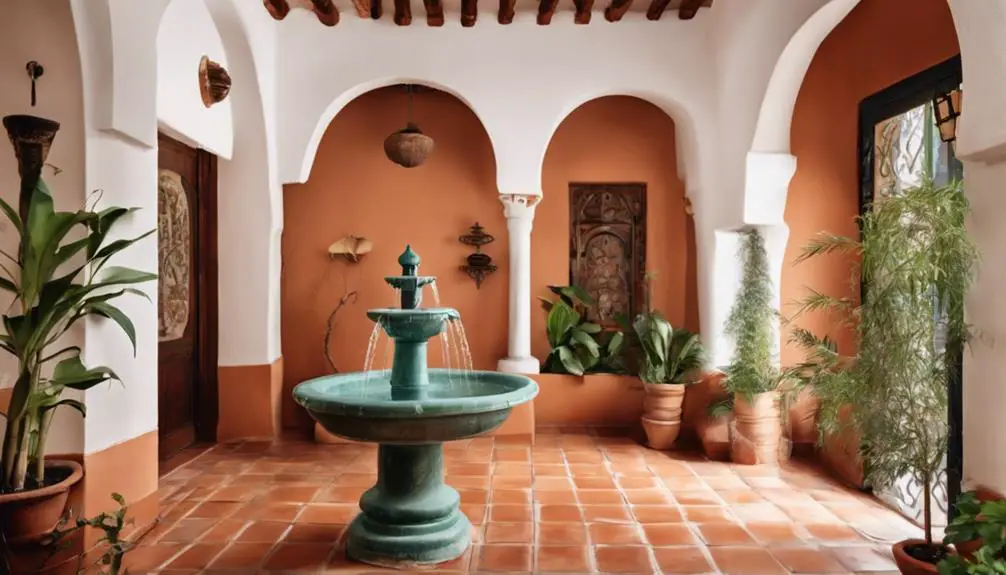
While absorbing the Spanish lifestyle into your Feng Shui practices enriches your space with energy and movement, bringing Spanish interior design elements into your Feng Shui approach can truly harmonize and transform your environment. Spanish architecture's compatibility with Feng Shui principles isn't only about combining aesthetics but also about structuring your space for the free flow of positive energy or 'chi'.
The open courtyards and airy layouts of Spanish homes align perfectly with Feng Shui's emphasis on unblocked energy flow. The use of vibrant colors, particularly reds and yellows, common in Spanish interiors, are also integral in Feng Shui as they symbolize power and prosperity.
Feng Shui's impact on Spanish cuisine, on the other hand, may not be as immediately apparent. Yet, by applying Feng Shui principles in your Spanish-inspired kitchen, you can foster a harmonious cooking environment. The balance of elements – fire from the stove, water from the sink, and earth from the pantry – mirrors Feng Shui's fundamental principles. In this way, you're not just creating a visually appealing space, but a nurturing environment that feeds your soul.
Feng Shui in Spanish Workplaces
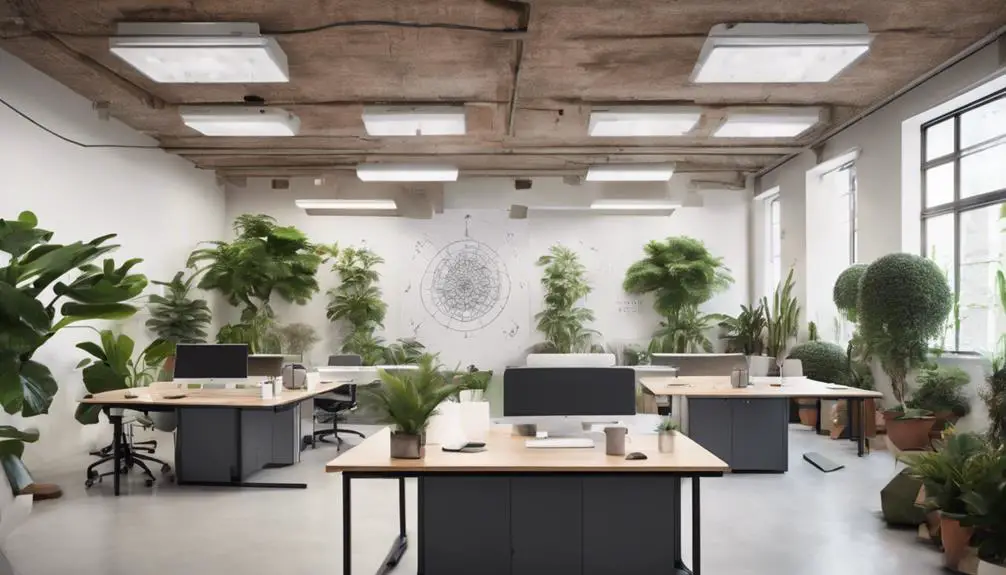
Shifting our focus to the workplace, let's explore how Spanish companies incorporate Feng Shui principles into their office layouts to boost productivity and foster a harmonious work environment. The influence of Spanish architecture blends seamlessly with these eastern philosophy principles, creating spaces that positively impact employees' well-being and productivity.
The office layout impact is significant. Open floor plans to allow the free flow of chi or energy, combined with the strategic placement of furniture, foster collaboration and communication. Spanish companies understand the power of Feng Shui in shaping a workplace that's not just functional but also promotes employee satisfaction and success.
Spanish architecture influence is evident too. The use of natural light, high ceilings and arches, which are characteristic of Spanish design, align with Feng Shui's emphasis on balance and harmony. They also integrate indoor plants and water elements, which are vital for a balanced Feng Shui setting.
Feng Shui Elements in Spanish Public Spaces
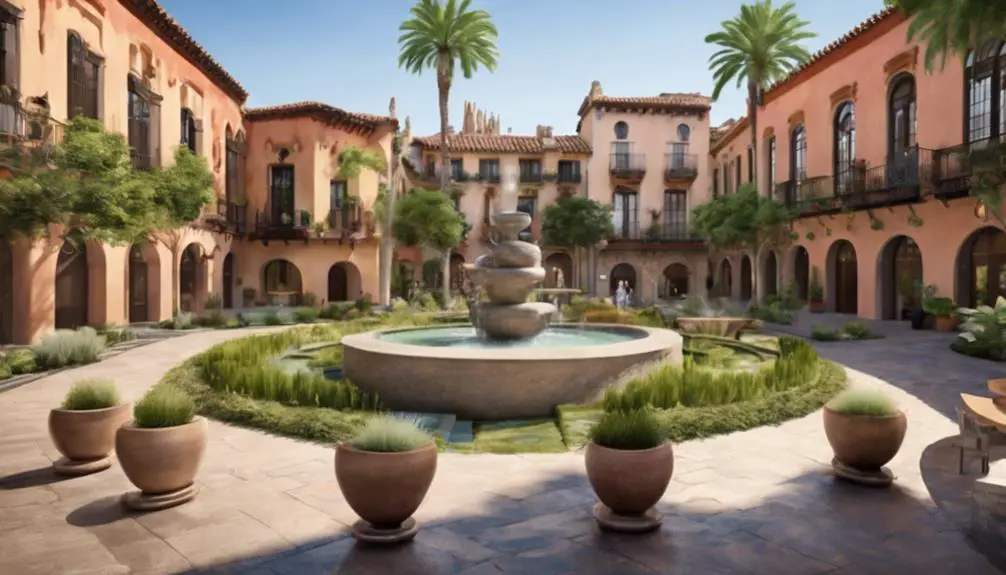
Beyond the confines of the office, you'll also find the principles of Feng Shui shaping Spanish public spaces, from parks to plazas. Spanish parks design, for instance, often reflects Feng Shui's emphasis on harmony and balance. You'll notice meandering paths that follow the natural landscape, facilitating the flow of Chi, or life energy. The arrangement of elements such as water features and trees isn't arbitrary. They're deliberately placed to foster positive energy and tranquillity.
Public plazas layout, another crucial aspect of Spanish urban planning, also embodies Feng Shui principles. These open, central spaces are designed not just for aesthetic appeal, but to serve as communal gathering points that encourage social interaction. They're typically surrounded by buildings, which provide 'protective arms' – a key Feng Shui concept that promotes a sense of security and comfort.
In essence, Spanish public spaces aren't merely functional or visually pleasing. They're carefully crafted environments that balance architectural features with natural elements, fostering a sense of peace and community. So next time you're in a Spanish plaza or park, take a moment to appreciate the Feng Shui principles at play.
Case Studies of Spanish Feng Shui Transformations

Let's dive into some compelling case studies that illustrate how Feng Shui principles have transformed Spanish spaces, both public and private. You'd be amazed how Spanish architecture's impact and Feng Shui symbolism can intertwine to create harmonious living and working environments.
Consider a renovated 19th-century villa in Andalusia. Initially, the architecture was stunning, but the energy was stagnant. With the incorporation of Feng Shui principles, the transformation was remarkable. The villa's rooms were rearranged to align with the bagua map, optimizing energy flow. Artifacts and mirrors were strategically placed to reflect light, symbolizing growth and prosperity.
Another case study is an office building in Barcelona. The layout was initially labyrinthine, causing stress and confusion. Feng Shui experts were called in, and they reorganized the space, creating a more streamlined, productive environment. They used Feng Shui symbolism, like water fountains symbolizing wealth and prosperity, and plants representing growth and stability.
These transformations are testament to the power of integrating Feng Shui principles into Spanish architecture. It's more than aesthetics; it's about enhancing the quality of life, productivity, and well-being. That's the magic of Feng Shui Spanish transformations.
Frequently Asked Questions
How Can I Incorporate Feng Shui Principles Into Spanish Cuisine or Cooking Habits?
You're curious about integrating feng shui into Spanish cooking.
Start by arranging your kitchen based on feng shui principles – clean, clutter-free countertops and a stove facing the entrance.
While preparing 'tapas', balance the five elements in each dish.
Consider Spanish architecture's influence; use circular plates for round arches.
Create a harmonious dining ambiance with colors and decor.
With these steps, you'll blend these two culturally rich concepts beautifully.
Are There Any Spanish Feng Shui Applications for Outdoor Spaces Like Gardens or Patios?
Yes, there are ways to integrate Spanish architecture influences and Feng Shui colors in your outdoor spaces.
You can arrange seating to face the best directions for energy flow. Use Feng Shui's earthy colors in your patio decor, mirroring the warm tones found in Spanish design.
Incorporate water features for balance and plant greenery to promote growth. It's all about creating harmony and a sense of serenity in your outdoor living space.
How Is Feng Shui Spanish Different From Other Regional Adaptations of Feng Shui?
You're asking how Spanish Feng Shui differs from other regional versions. Well, Spanish architecture influence makes it unique. It's about harmonizing with the distinctive features of Spanish homes—think courtyards, tiles, and vibrant colors.
It's also about blending cultural adaptations in Feng Shui, like using local symbols for luck and protection. So, it's not just a straight copy of traditional Feng Shui—it's a vibrant, living practice that reflects the culture it's part of.
Can Feng Shui Principles Be Applied to Spanish Music or Art?
Absolutely, you can apply Feng Shui principles to Spanish music or art. Just like Feng Shui symbolism influences Spanish architecture, it can also shape artistic expressions.
You'd look for balance, harmony, and the flow of energy in a painting or melody. You'd use colors, shapes, and sounds to create a desired effect.
It's about creating a harmonious environment, whether it's a room or a canvas. It's not just a design philosophy, it's a way of life.
How Can I Find a Professional Feng Shui Consultant Who Specializes in Spanish Environments?
You're searching for a Feng Shui consultant with expertise in Spanish environments. Look for someone who understands Spanish architecture influences and can navigate cultural adaptation challenges.
Check professional Feng Shui associations, look for consultants with international experience, or use online platforms that rate and review specialists. Don't forget to ask about their knowledge of Spanish aesthetics and cultural elements.
You're on your way to harmonizing your space!
Conclusion
You've now gained a fascinating glimpse into the fusion of Feng Shui and Spanish design. With this knowledge, you can incorporate these principles into your own spaces, whether at home or work. Remember, it's all about achieving balance and harmony.
As seen in Spain, Feng Shui can undeniably transform spaces, and ultimately, lives. Keep exploring, keep learning, and open your world to the dynamic possibilities of Feng Shui Spanish style.


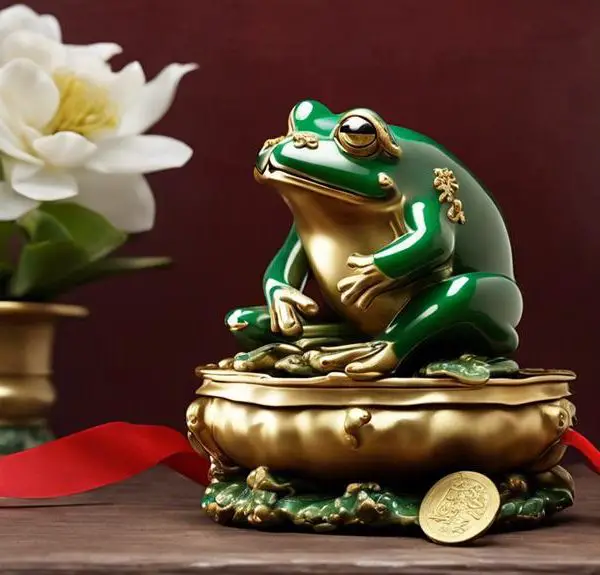
Sign up